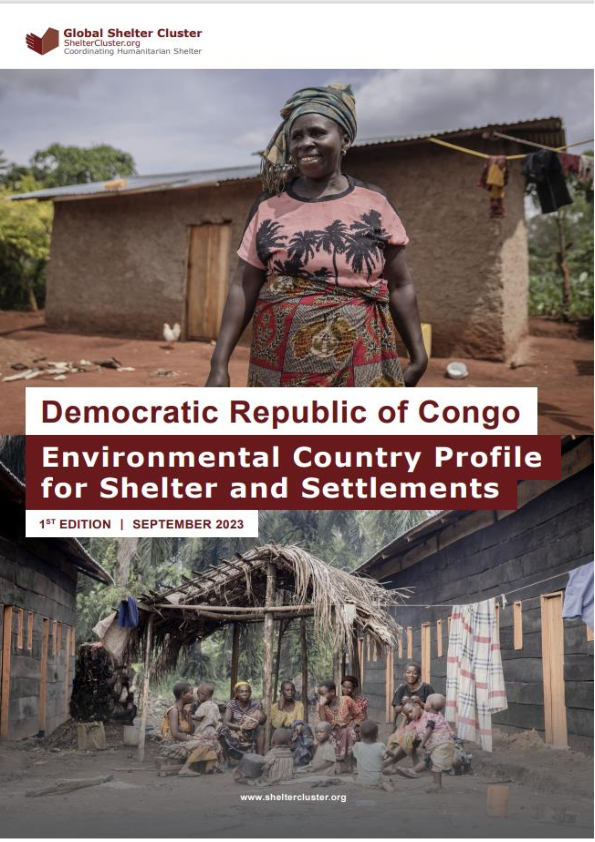République Démocratique du Congo
DRC Environmental Country Profile for Shelter and Settlements
Why this Environment Profile?
Integrating Environmental Information into Humanitarian Response
Much of the impact of a crisis and most of the response involves the environment. It is being increasingly understood that not considering the environment in humanitarian response can reduce the impact of the response and lead to greater harm on the part of those affected by a crisis.
When responding to disasters and other crisis humanitarian organizations have limited time or means to collect, analyze, and integrate information on the environment into responses plans and operations. This can happen even where considerable information is available from public sources, local organizations, and experts, and from previous responses.
The classical approach has been to send in a team of experts to advise on environmental aspects of a response. However, this is only possible for major disasters, leaving a gap for small to medium events.
DRC Shelter Environmental Country Profile (hereafter, the Profile) uses a different approach: collecting, summarizing and, where necessary, providing additional analysis of response-relative environmental information before a crisis so that it is available to responders when needed. This ready-reference approach focuses more on creating a catalog of what information is available than providing a detailed analytical report.
However, the DRC Shelter Environmental Country Profile varies from this basic model in that is has been developed during on-going humanitarian operations. As a result, this Profile included environment-related analysis which can be used during ongoing humanitarian operations. As well, this Profile includes suggested actions to improve the environmental footprint and impact of shelter and settlements-related operations. These opportunities are identified in the specific sections under the heading of Suggested Further Actions and summarized above.

